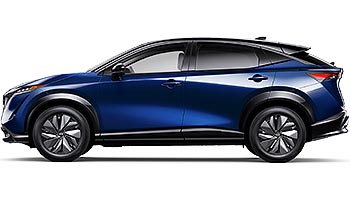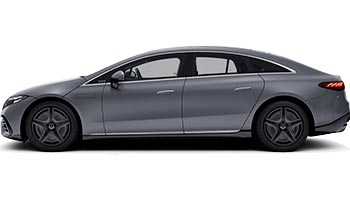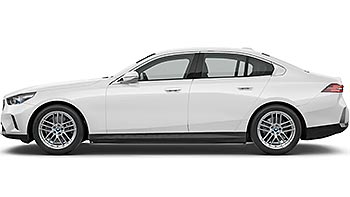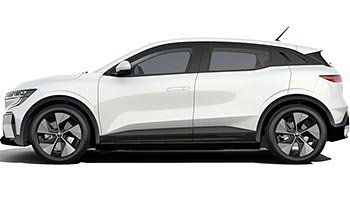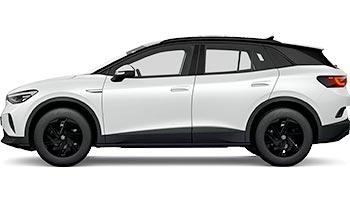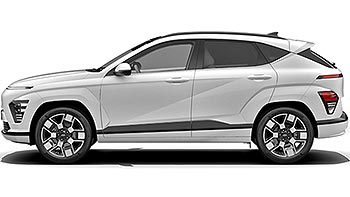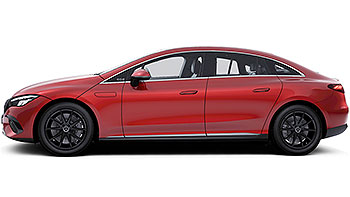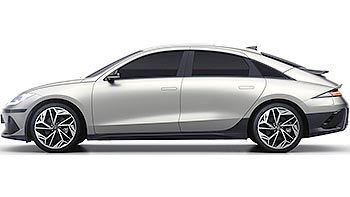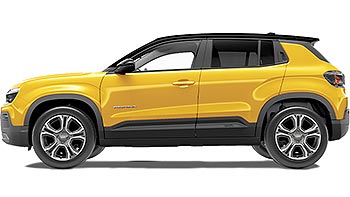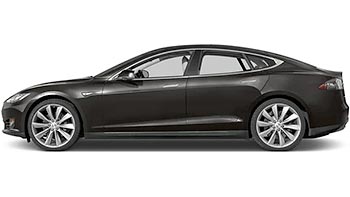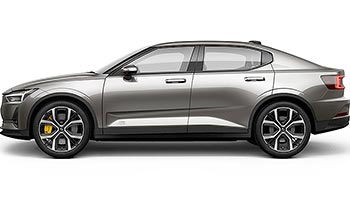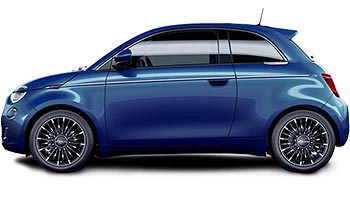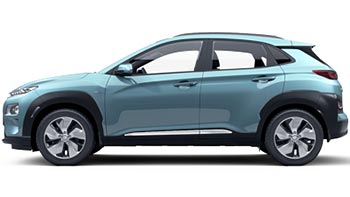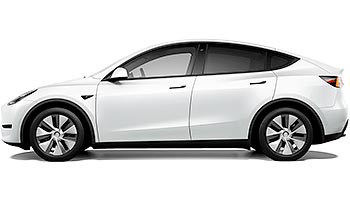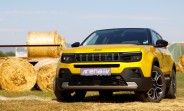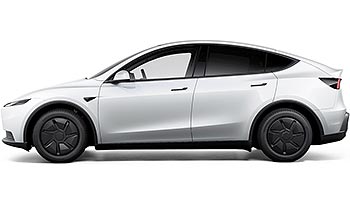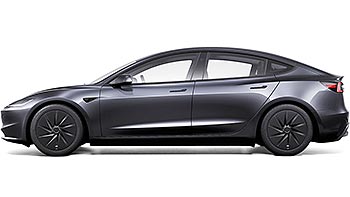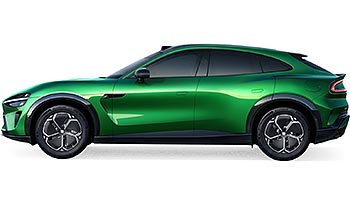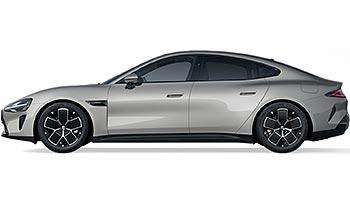2024 Hyundai Kona Electric 65.4 kWh review

Hyundai first introduced the Kona back in 2017 in petrol, diesel and hybrid variants with the fully electric version only arriving later in its life. But the Kona Electric came in by storm and quickly became one of Hyundai’s most popular models. There are around 300,000 electric Konas roaming the streets now, so naturally, Hyundai was quick to deliver a facelift and now a second generation and keep the momentum.
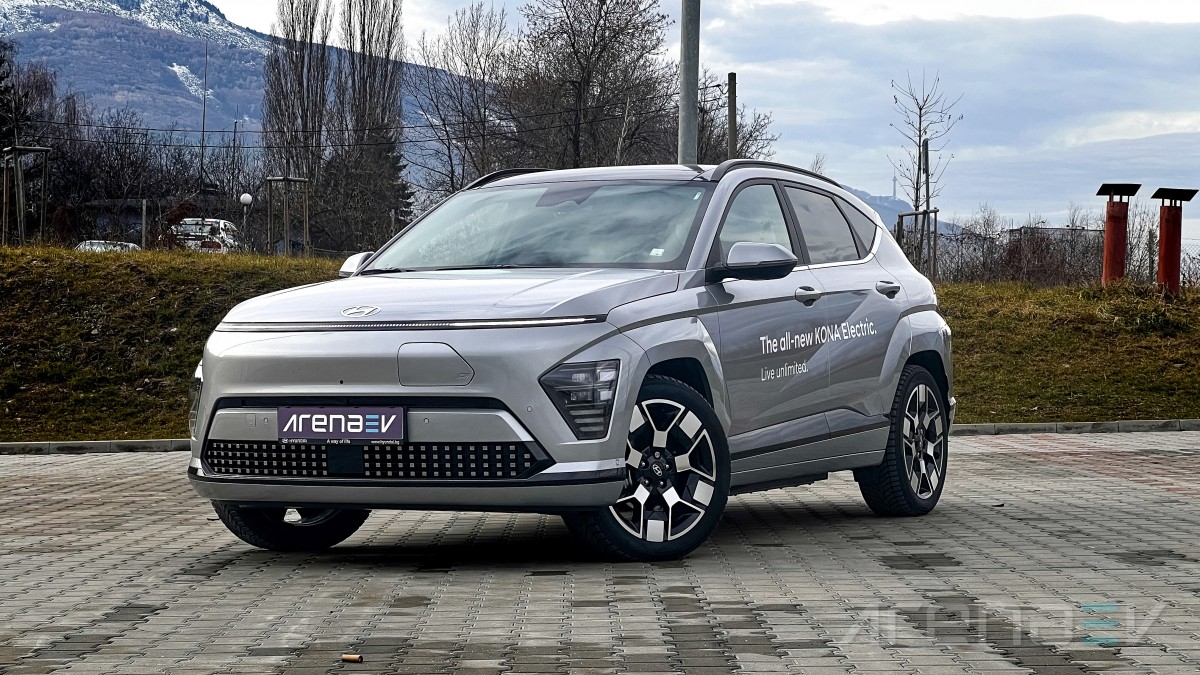
Table of Contents:
- Exterior
- Interior
- Storage & practicalities
- Driving experience
- Tech features
- Ride comfort
- Cabin noise
- Acceleration and braking
- Consumption
- Charging speed
- Competition
- Verdict
Today, we are looking at the brand new and improved version of the Hyundai Kona Electric in its 65.4 kWh variant and Premium trim level. Despite the outgoing Kona's popularity, it came with some flaws and Hyundai now claims to have addressed them all and made a far more refined vehicle.
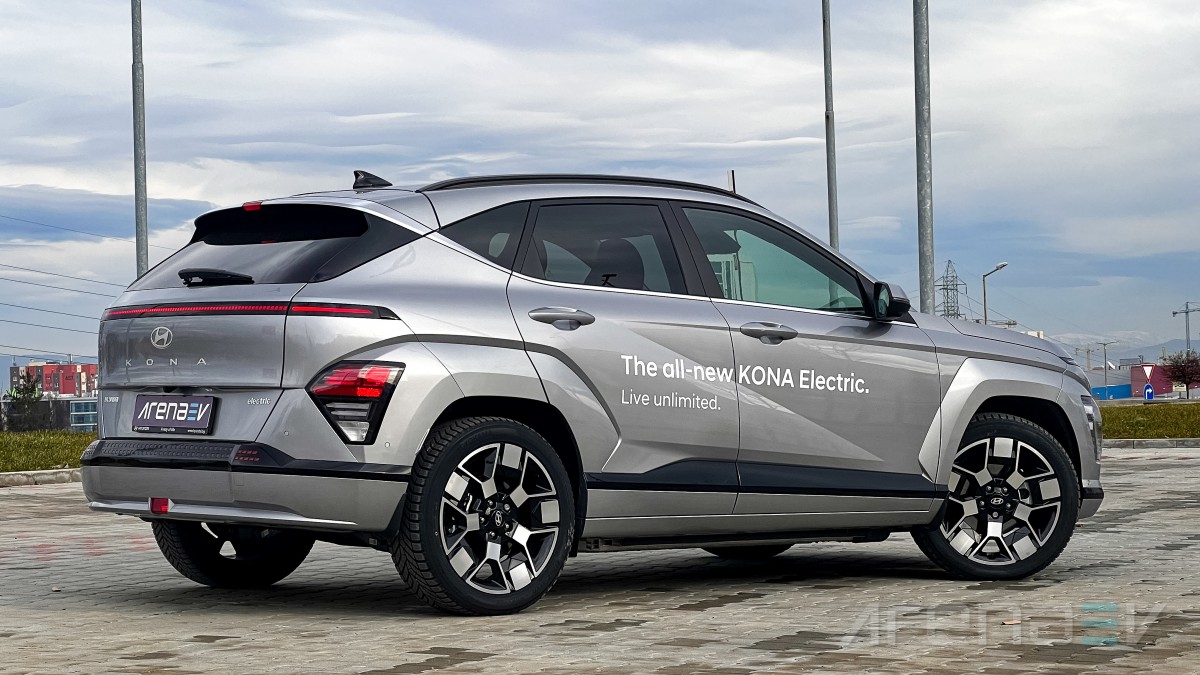
The new Hyundai Kona keeps the same general recipe - it is still an FWD crossover and even though it has slightly grown in each dimension fits well within the compact segment. The battery is slightly bigger at 65.4 kWh, yet the torque is significantly lower at 188 lb-ft in an attempt to avoid the infamous wheelspin that plagued the first Kona.
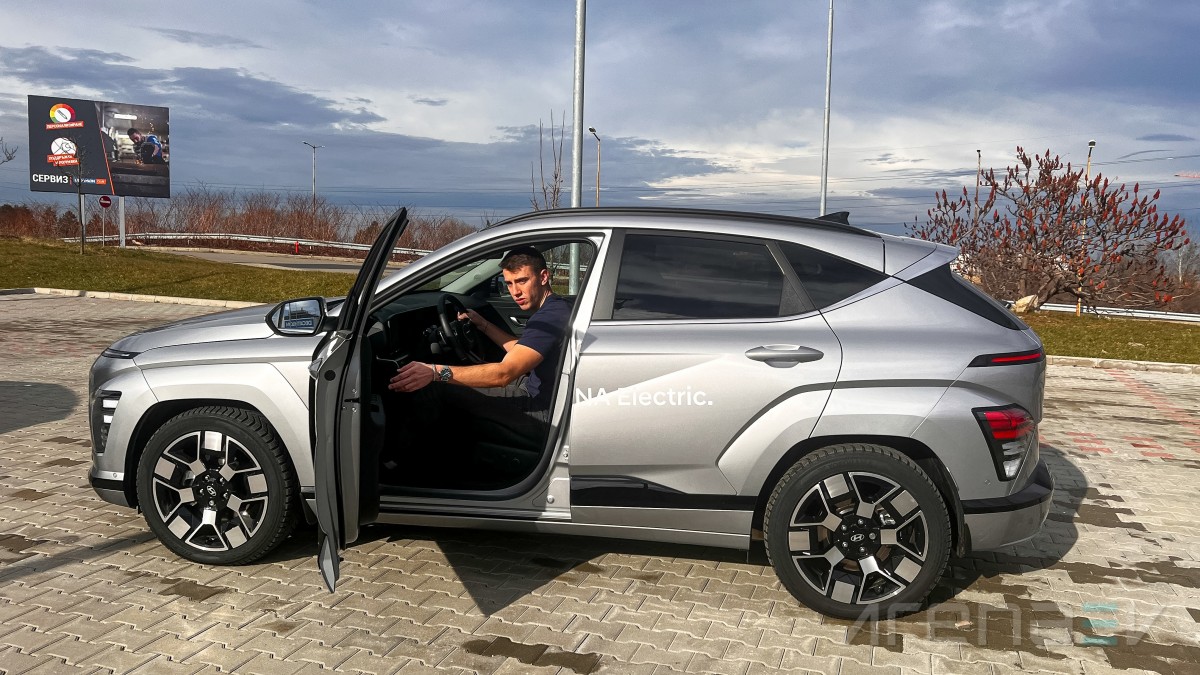
On paper, the new Kona Electric is a far more refined vehicle, but we will now test how the upgrades translate to real-life driving experience!
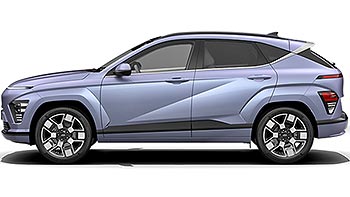
Hyundai Kona Electric 65.4kWh 2023 -
- Dimensions: 171.5 inches x 71.9 inches x 62.2 inches, 104.7 inches wheelbase.
- Drivetrain tested: 65.4 kWh - FWD 160 kW (218 hp), 188 lb-ft, 65.4 kWh usable battery capacity; 68.5 kWh total battery capacity.
- Other drivetrains: 48.4 kWh - FWD, 115 kW (156 hp), 188 lb-ft, 48.4 kWh usable battery capacity
- Charging: 100 kW CCS; 10-80% in 41 min.
- Range: 319 miles WLTP
- Weight: 4,762 lb unladen; 5,732 lb gross
- Other features: V2l (Vehicle to load charging), Sunroof, OTA updates.
Exterior
Even after the facelift the first Hyundai Kona looked like a generic crossover, while the new one spices things up with more distinctive styling, especially when it comes to lights. If you are as big fans of RoboCop as we are, you can't have missed the resemblance to the helmet of the sci-fi icon of the 80’s. The car looks daring and futuristic, without being over the top.
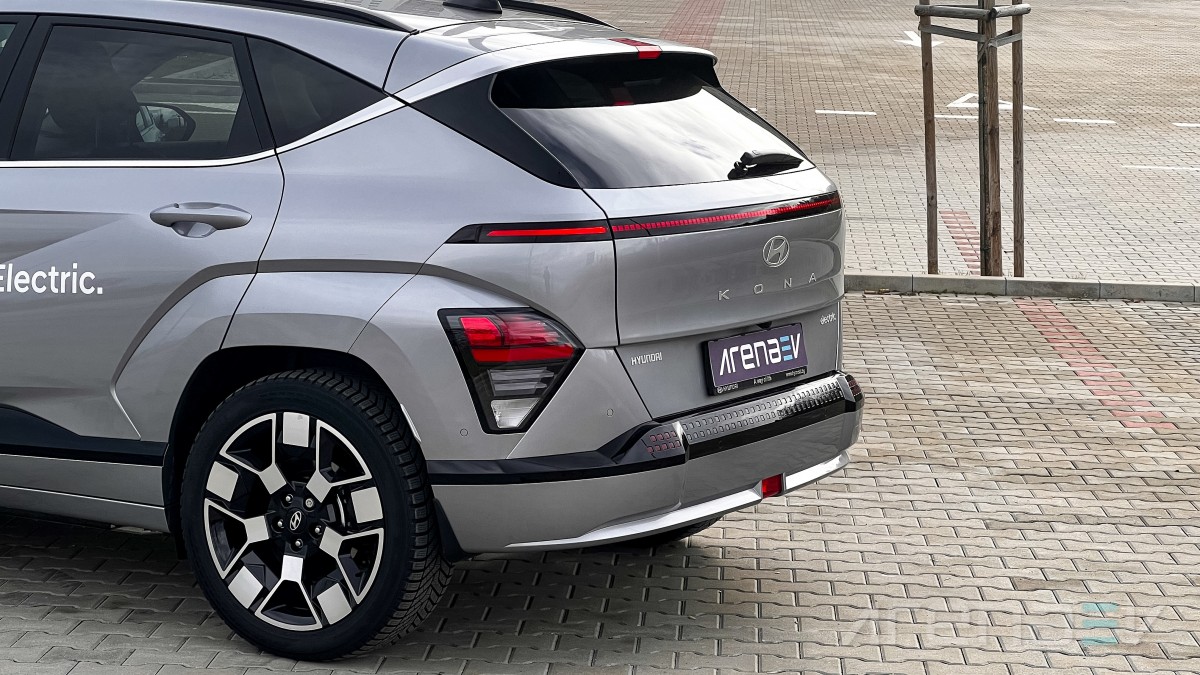
The front of the Kona is certainly recognizable with its curved lines and giant LED bar that incorporates the daytime running lights. What disturbs the look is the huge chargeport, which is irritatingly slightly offset from the center, but elsewhere, the lines flow nicely together.

Since the Kona Electric doesn’t need the giant low mounted grille from the ICE version, it gets more body-colored elements and a much smaller grille in the lowest part of the bumper. Instead of a simple black trim, Hyundai fitted chrome squares for a more undisturbed look and the dotted pattern that has become somewhat of a signature feature in recent Hyundai EV models.

At night, the Kona is highly recognizable with its LED strip across the whole front, which also incorporates said squares in the middle. The main headlights, for their part, work very well and light up a fantastic path ahead, especially when you use the automatic high beams.
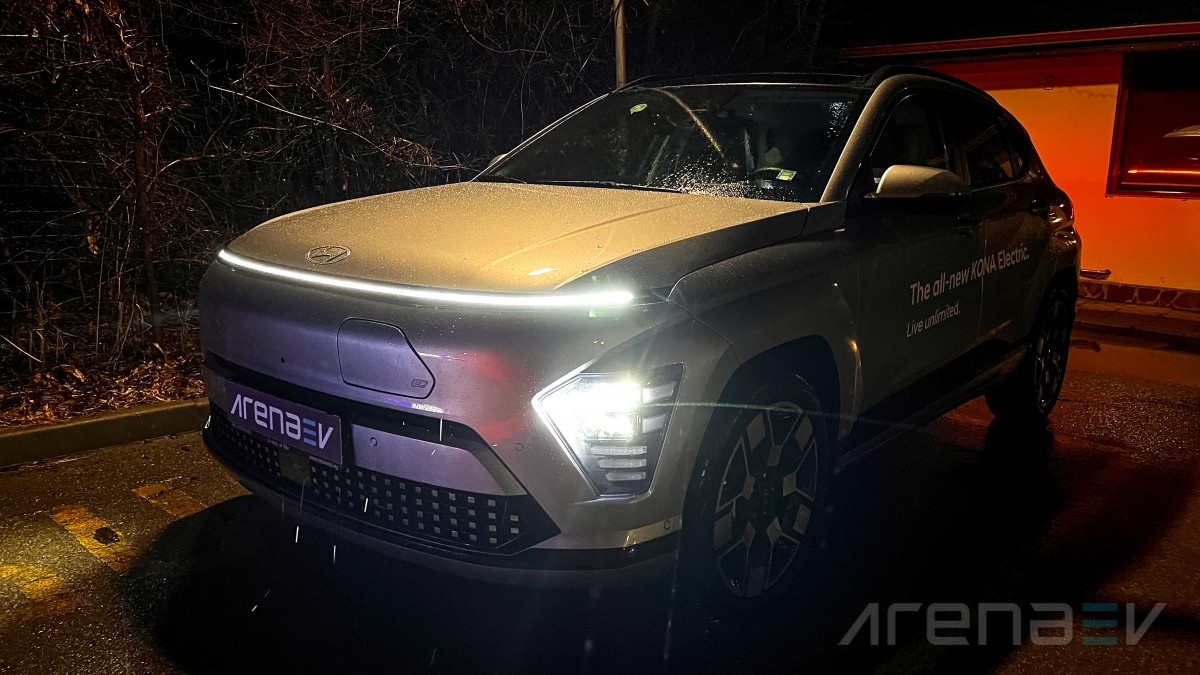
From the side, the new Kona features multiple edges and appears much bigger than it actually is. The fenders appear really flared from a distance, even though they really aren’t. Still, the new Kona is not only visually, but also factually bigger than the old model.
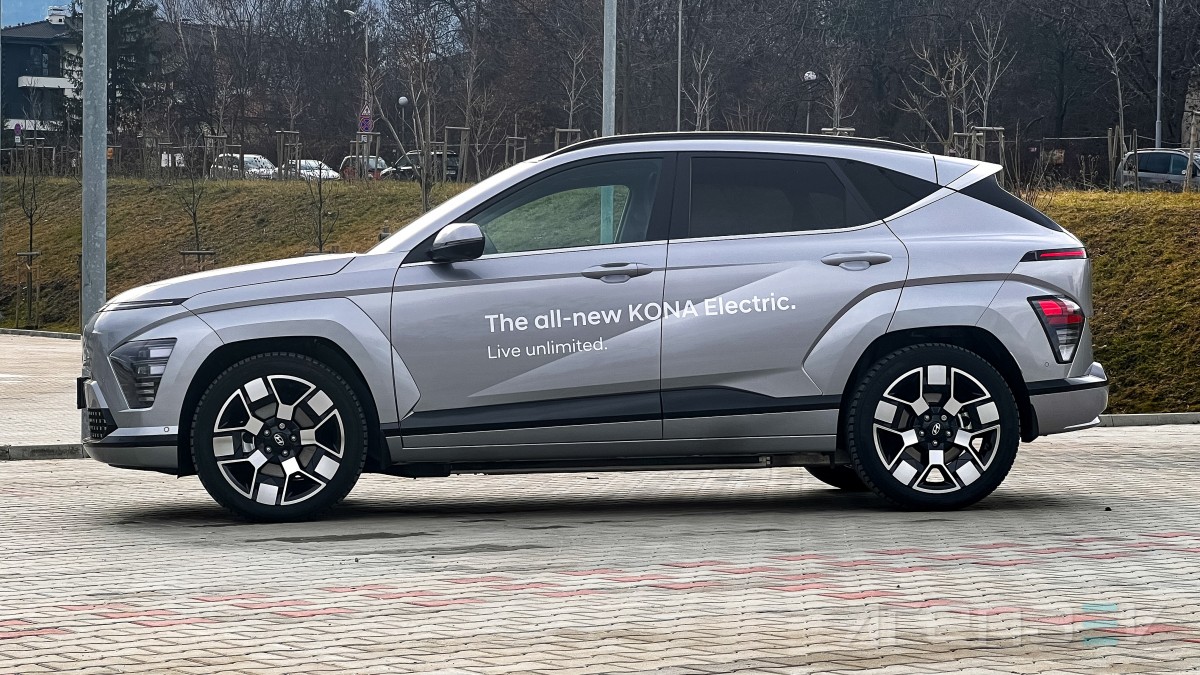
The lower skirts are body colored, but feature black trims on top to create a fake rugged look. It is understandable the Kona is no off-roader and a slightly higher clearance is about all it has when it comes to driving away from paved roads.
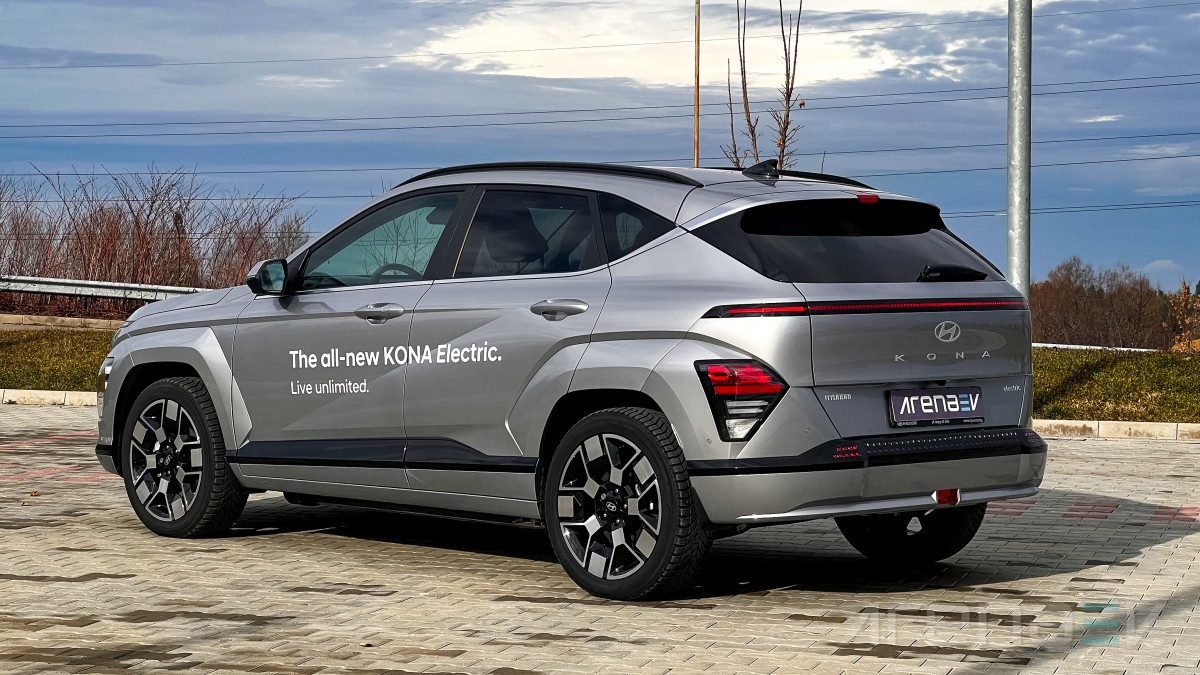
The original Kona only came with 17-inch wheels, whereas the new one gets to 17-inch and 19-inch versions. We have the latter fitted to our test model and while they definitely improve the looks, they also significantly increase consumption and in turn reduce range. The Premium trim only comes with the bigger wheels, while the rest of the lineup can be configured with either option, although variances from market to market are to be expected.
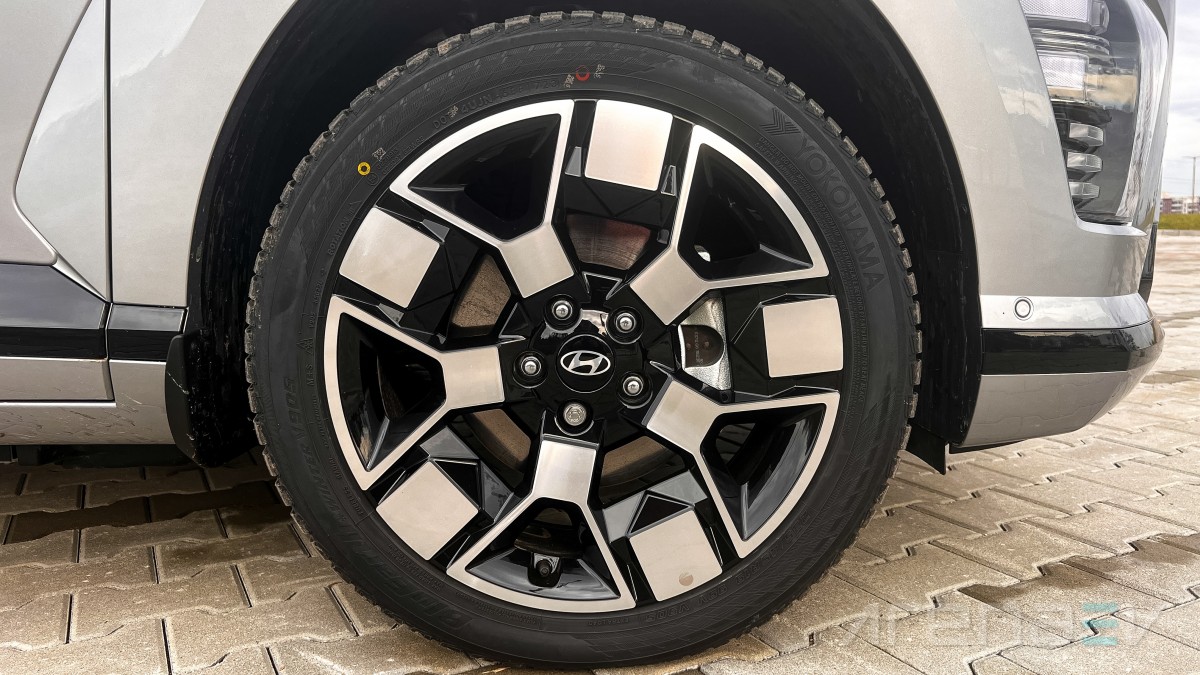
The rear of the Kona once again mixes retro elements and modern touches with generally positive results. The Kona Electric has a giant rear pixelated LED bar for the tail lights and turn signals, but also two detached units for the other lights in each corner.
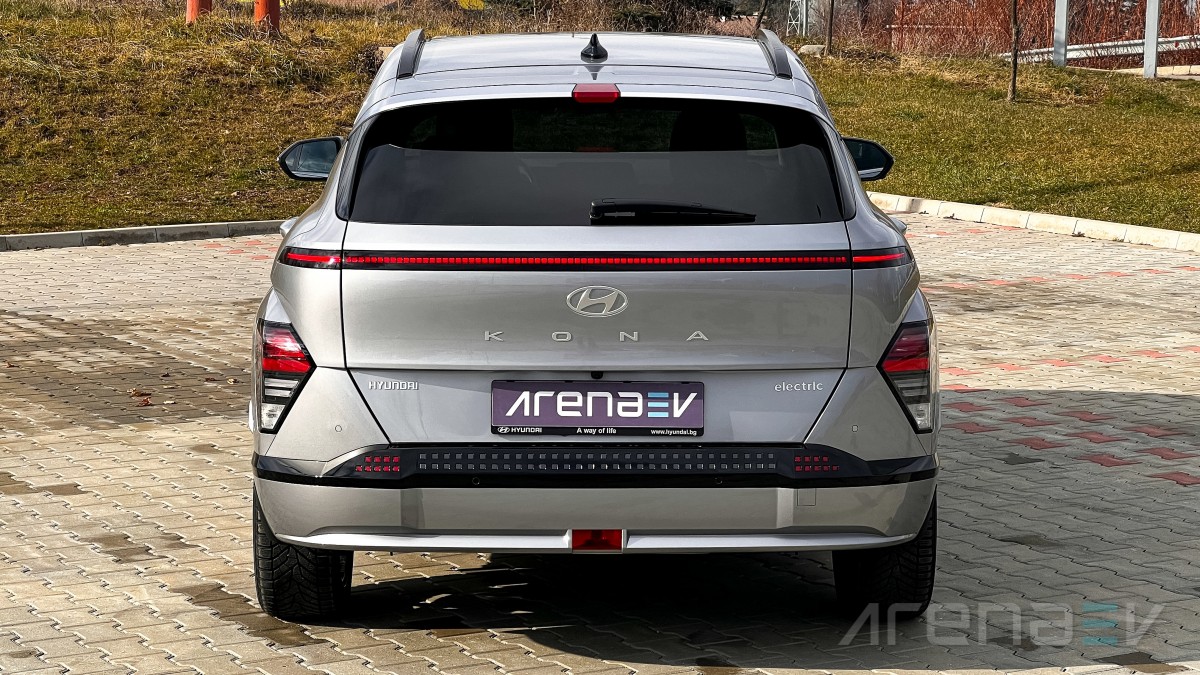
The Hyundai logo stays prominently in the middle of the rear hatch, while “KONA” is spelled with giant letters.
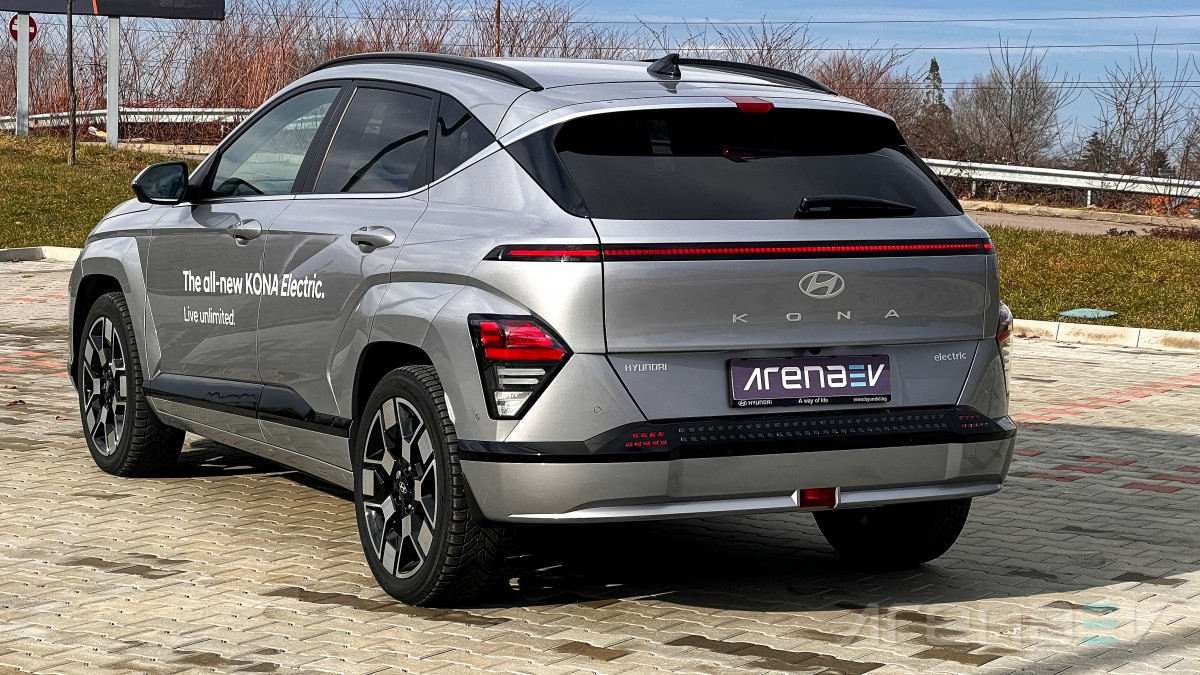
Another small pair of tail lights sit on the two corners of the rear bumper, again in the shape of pixels, connected together by a huge row of other dummy pixels.
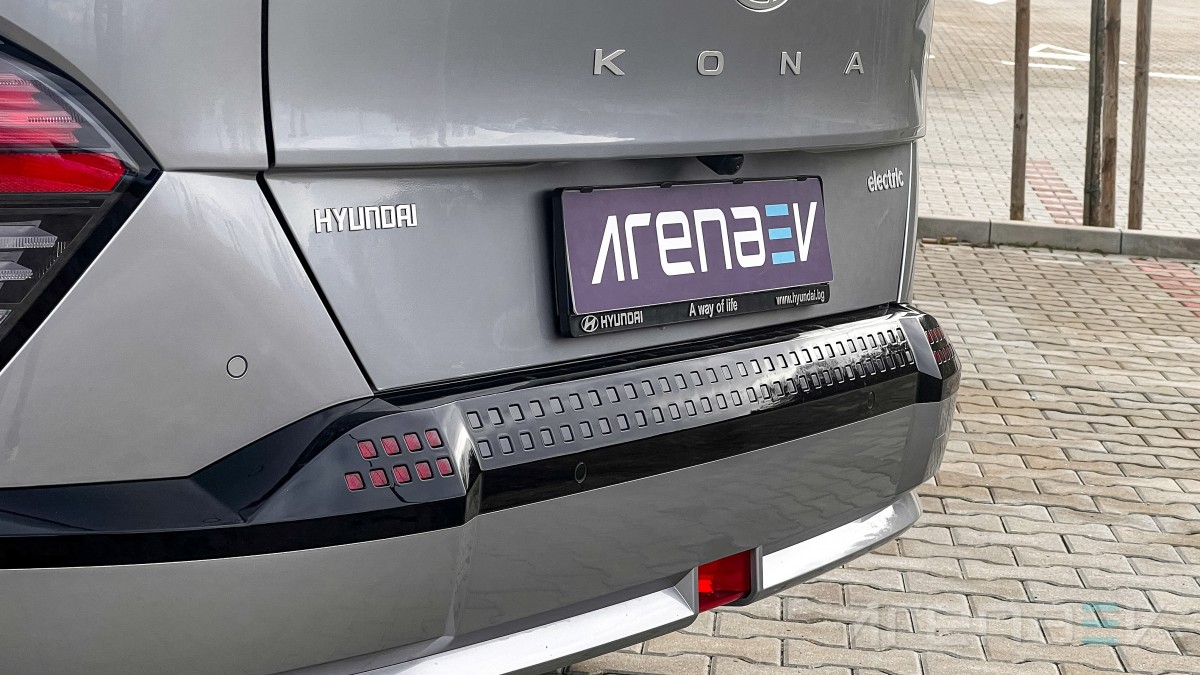
Interior
The interior of the Kona is a significant improvement over the previous model, even if there aren’t too many radical changes. The cabin of the Hyundai Kona remains conveniently laid out and looks decently too.

The quality of materials is far from the greatest, but the built is impeccable and everything feels solid. There are many cheap hard plastics, but no bits of the interior feel like they might fall apart after a few months of use.
The driver and front-row passenger fit comfortably into the new seats which, in the top trim, offer heating and ventilation, as well as lumbar support for the driver. They are cosy and soft, without promising any extra support for sportier cornering, which makes them so suitable for a compact crossover like the Kona. The passenger seat has a button which lowers the it and drops the back, so that you can lie as if you are in a bed.
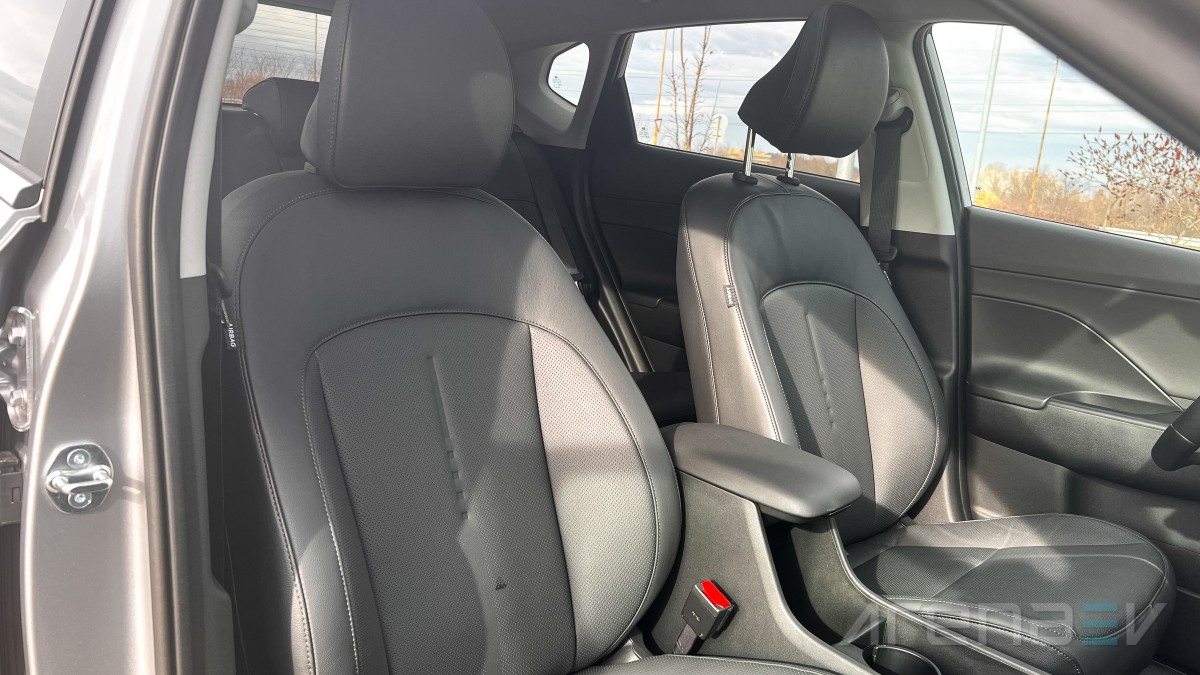
The steering wheel, like in the Ioniq 5 and 6, doesn’t have the Hyundai logo, but instead it gets just a plaque with dots. The buttons are identical to what you’d find in an Ioniq, but here they are regular hard plastic, instead of the transparent fancy one.
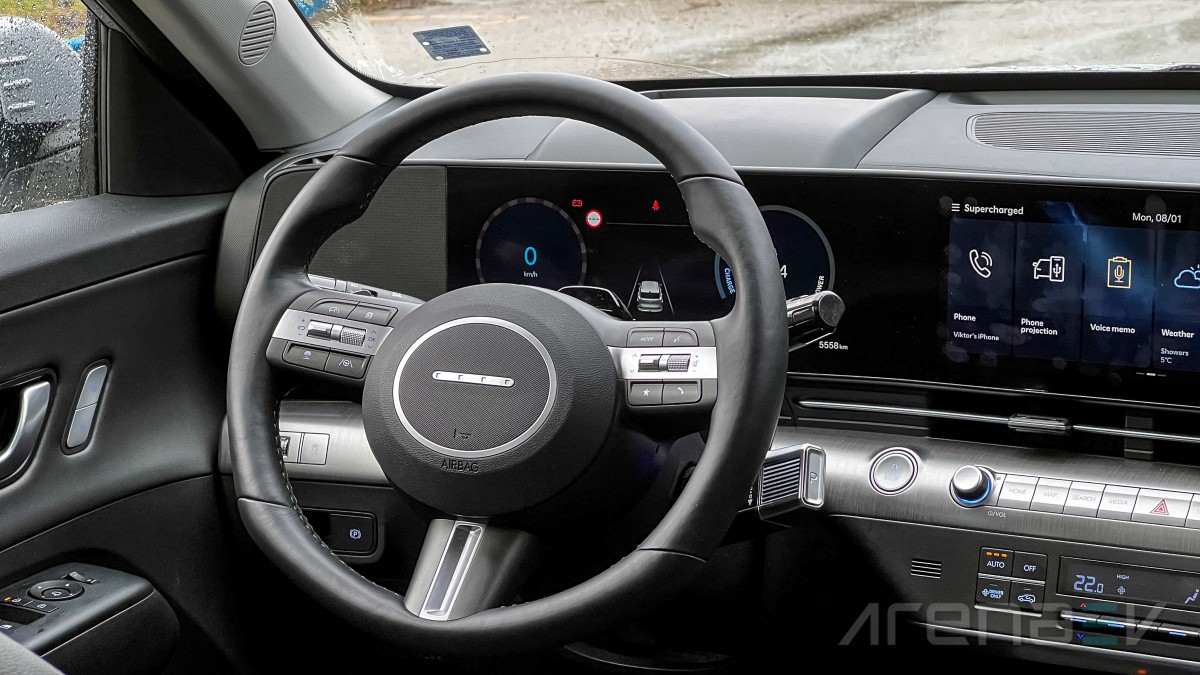
Typical for new Hyundai models is the stalk behind the steering wheel that selects the gears, which is very convenient as it clears up space in the center console. What we don’t really enjoy is that you have to turn it like a knob and also the gear tree goes D, N, R, which is opposite to just about any car with a column-mounted shifter out there. Unless you are frequently changing cars you’ll get used to that quickly enough though and the good news is all stalks on the column have great heft to them for an upmarket sensation.
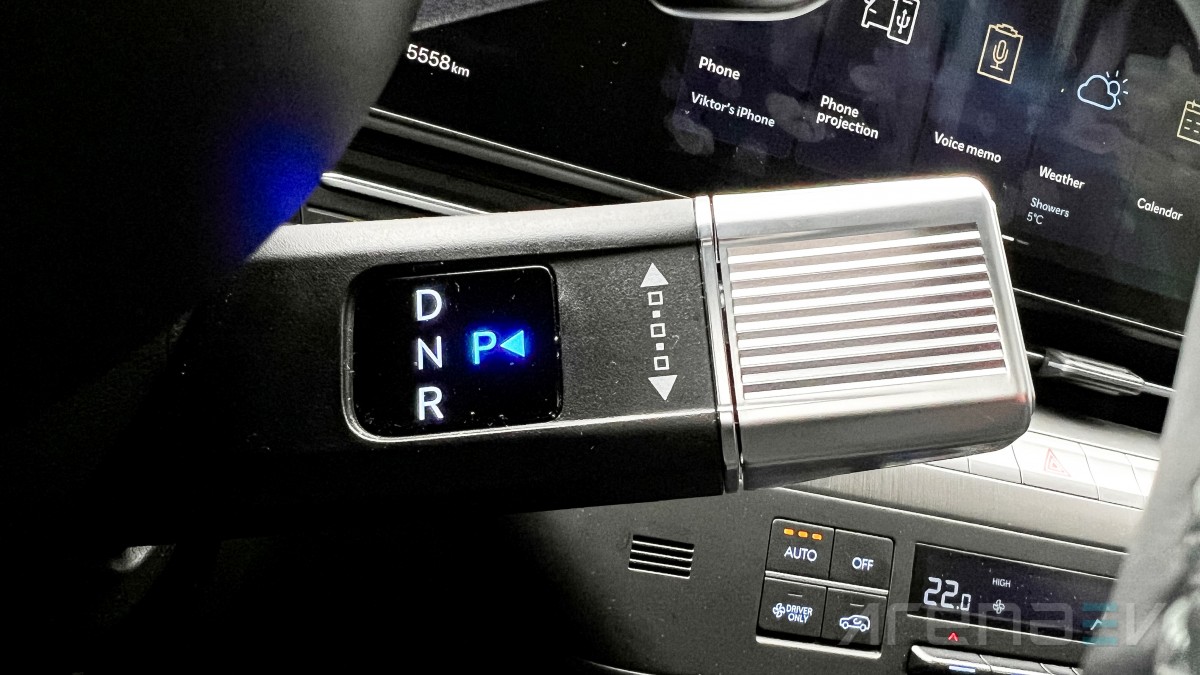
To the left of the steering wheel is a giant square mesh pad, which looks like a speaker at first, but in reality it’s a velcro patch so that you can stick stuff there. We’re not really sure how usable that might be, but it’s there for your convenience.
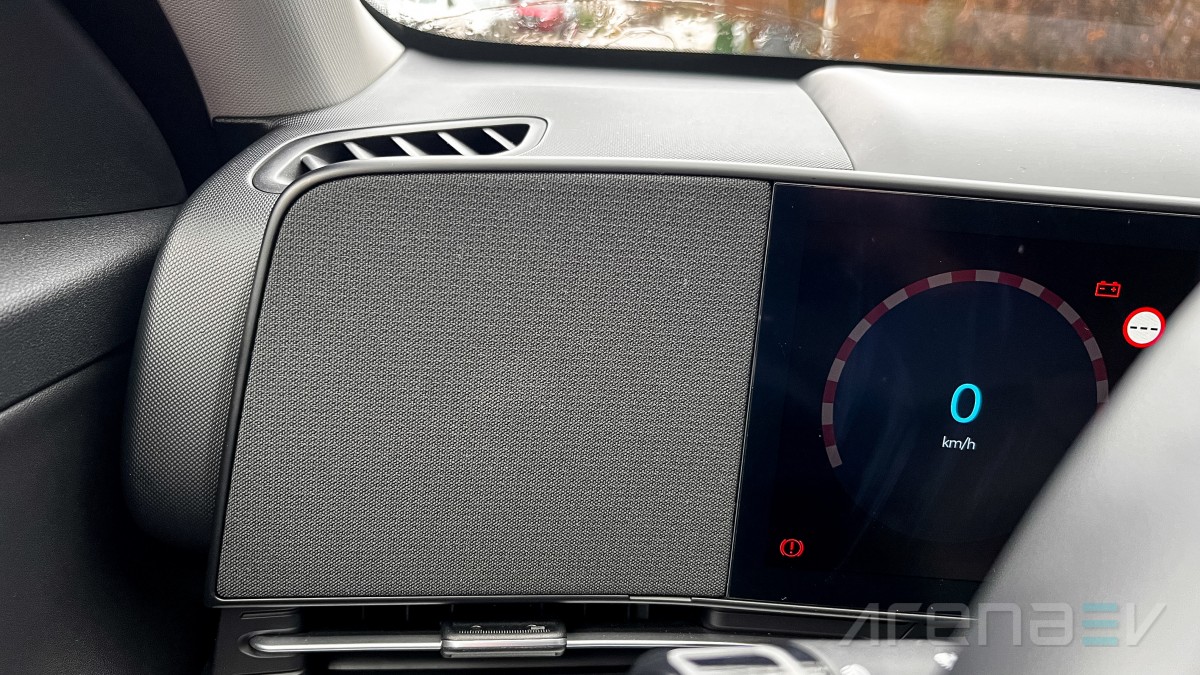
Stemming from that pad is the digital gauge cluster, which has a 12.3-inch display. Its graphics look outdated and cheap and would really fit a toy car more appropriately than a real one. There are several different outlooks you can choose from and frankly none of them look like they fit the rest of the vehicle.
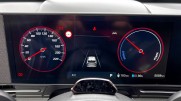
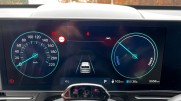
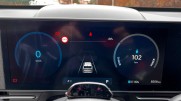
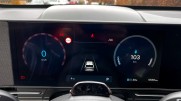
None of the gauge cluster outlooks look particularly great in the new Kona Electric.
The center display is now mounted on the same surface as the gauge cluster unit and has the same size. It has a modern interface and is quite easy to use. We will talk more about its capabilities later on in the review.

Below the screen is a host of buttons. The first row is dedicated to shortcuts for the most important infotainment features, as well as the stereo controls and the hazard lights.
The second row has all the climate control features, as well as a separate display for the A/C. We applaud Hyundai for not going the touch-only way for its climate controls as so many manufacturers are these days. On the Kona you get all the important functions are just a button away for easy and simple operation.
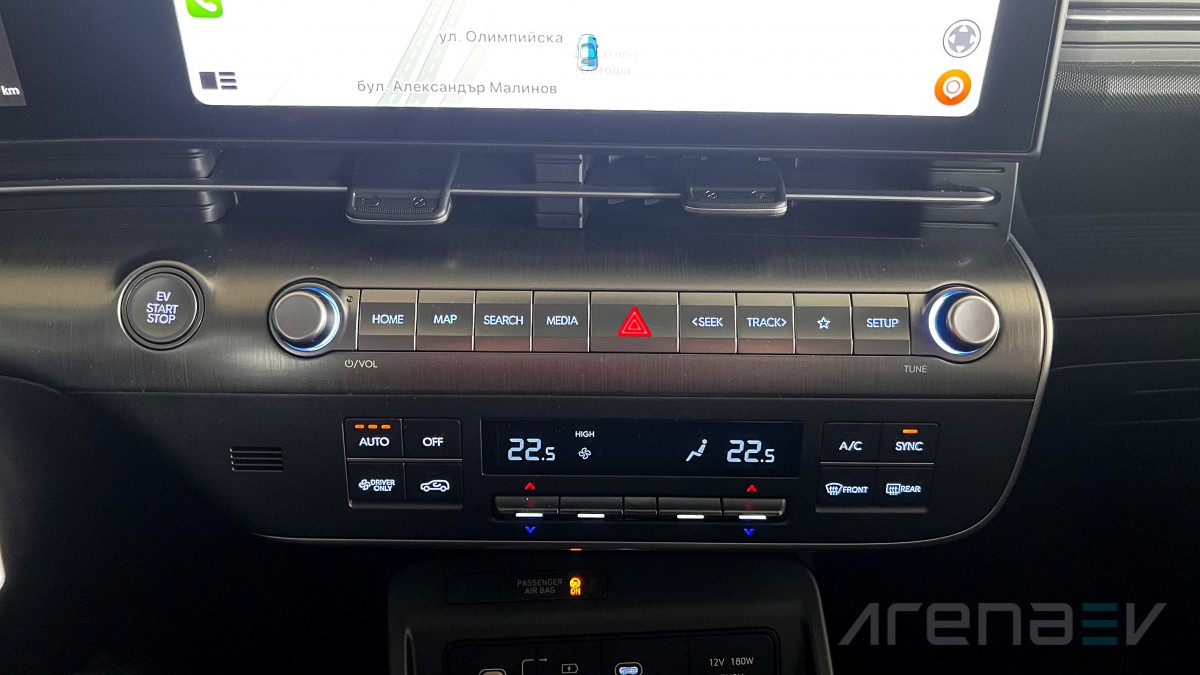
The center console begins beneath that panel and it incorporates a multitude of features. The two USB-C ports can charge your electronics, but can also work for screen-mirroring of your phone. You also get a 12V "cigarette lighter" socket and a massive wireless charging pad, which can also be used just for storage.
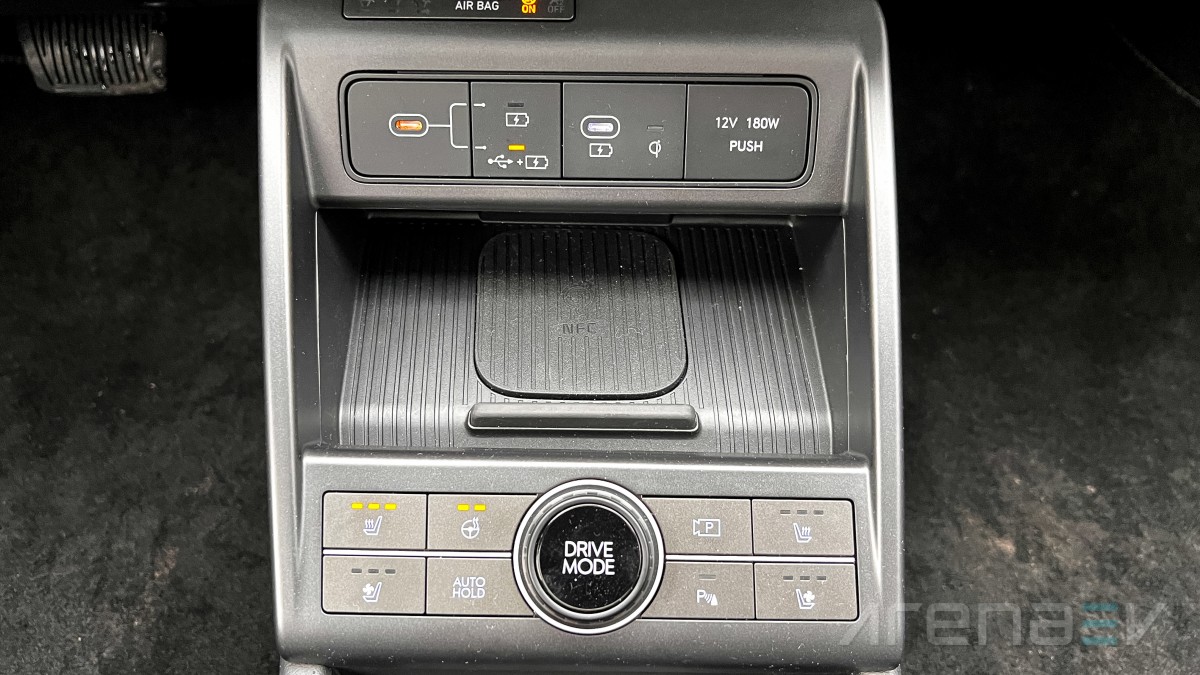
Below that is a panel with eight buttons and a big round mode selector dial. You turn it in each direction and it changes how the Kona behaves on the road. The buttons control the seat comfort functions, steering wheel heating as well as the auto hold, camera and parking sensors.

The part of the center console between the front seats contains a lot of storage pockets. The cupholders pop out with the press of a button, but when those are tucked away you get a lot of storage space. The armrest also hides significant space underneath itself and a small detachable pocket for increased practicality.

In front of the front passenger, integrated into the dashboard is a long open pocket, where you can store frequently used items, but be careful as they might fly out.
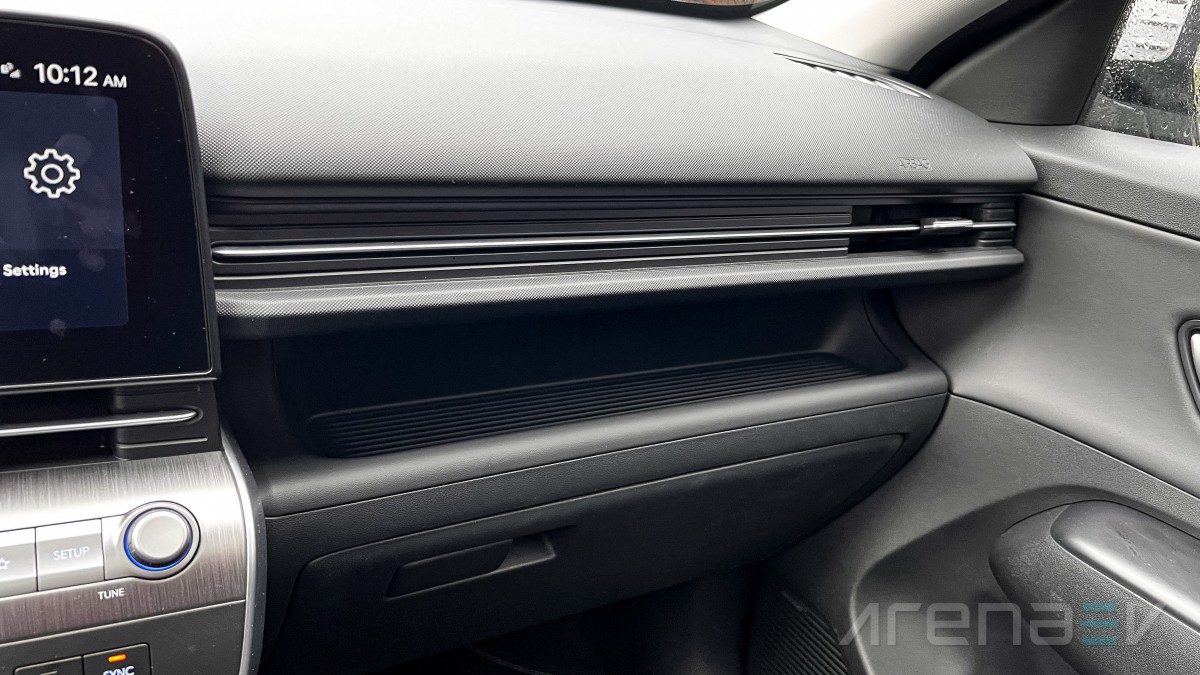
The front doors have some storage pockets as well, but the poor quality materials for the armrests and window switches takes away from the otherwise very pleasant interior.
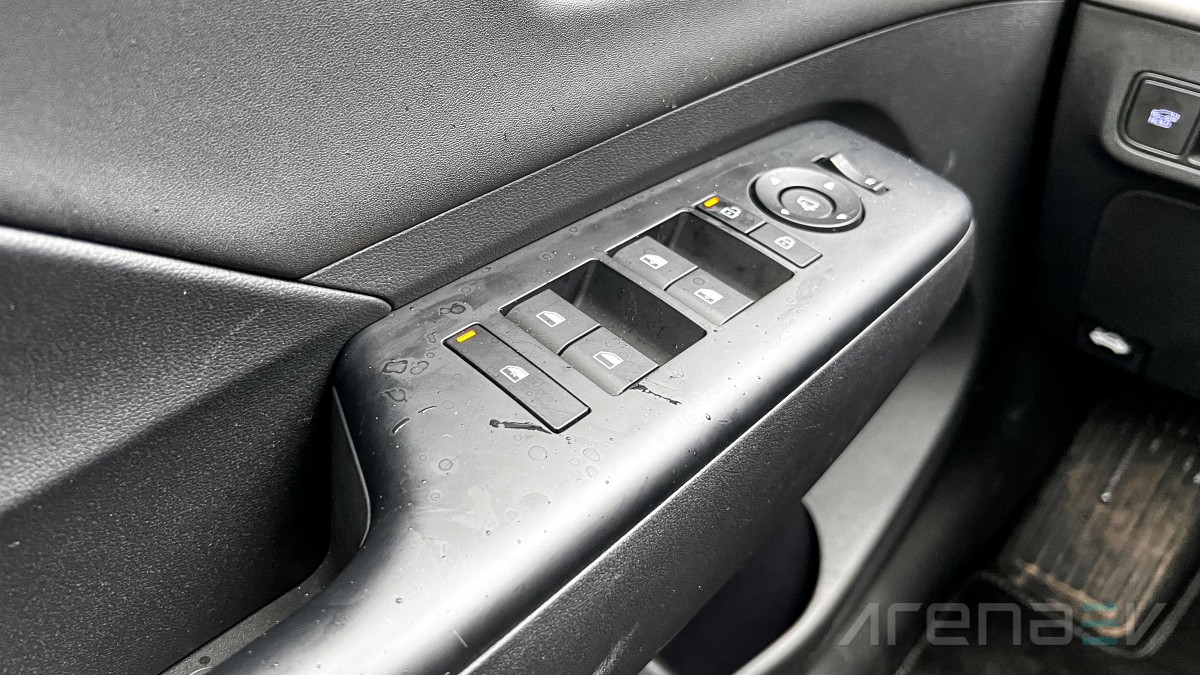
A fine option the Kona gets in the upper trim levels is the sunroof, which isn't fully panoramic, but can open and bring in fresh air. It is a feature we truly appreciate and are very happy when we can open the roof, instead of just looking through it like in many other vehicles.
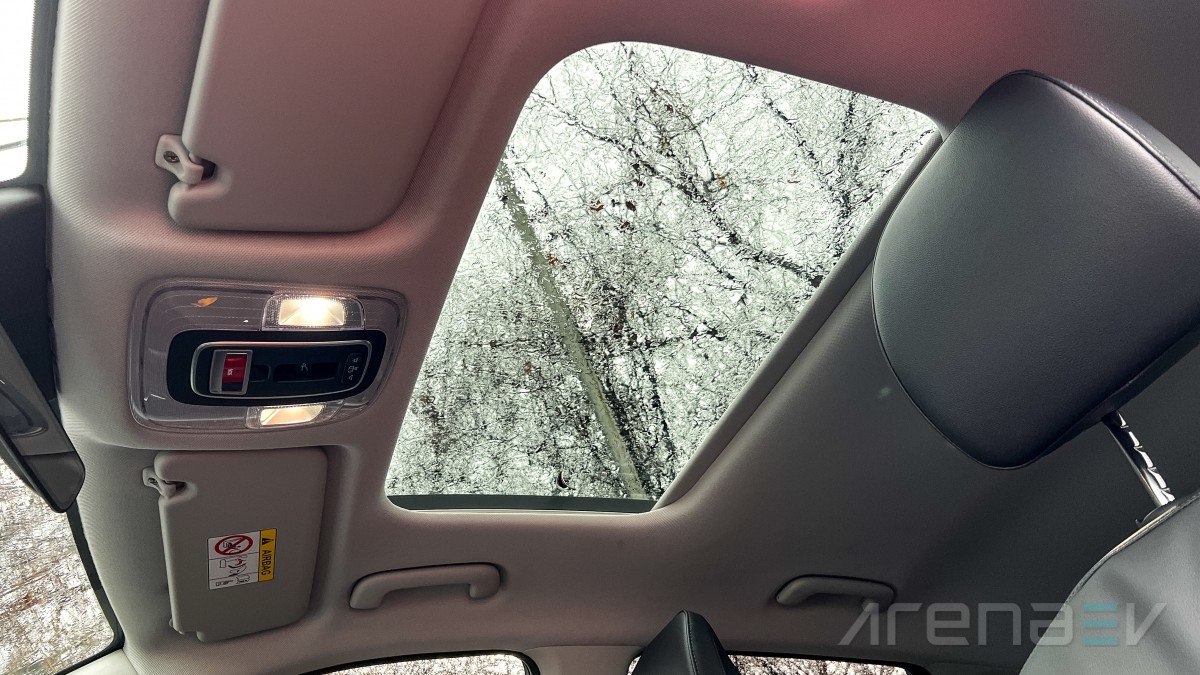
The rear occupants treat themselves to awesome luxuries, some of which are hard to find on much more expensive vehicles. The niceties include heated seats, two USB-C chargers and even a full-sized electrical outlet.
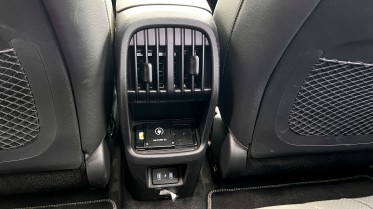
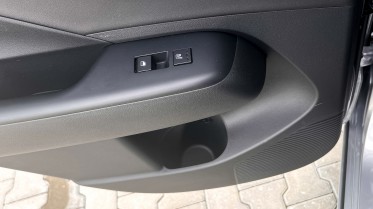
The rear passengers get great luxuries not many vehicles offer.
Space is very generous for both the rear passengers, as well as the ones up front. Our reviewer is 1.95 m (6’4”) tall and fits comfortably in the back with some space left above his head and in front of his knees. While the original Kona already offered comfortable seating, here things are taken up a notch, which is mainly due to the bigger overall size of the new version.
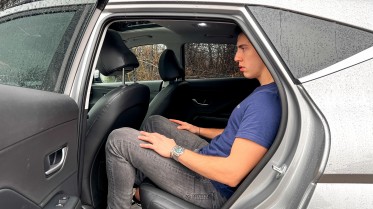

There is enough room for the rear passengers to travel comfortably.
Storage & practicalities
The trunk of the new Kona is a big improvement over the previous model with generous 16.5 ft³ of storage space, and by lowering the rear seats this number can go up to 45.9 ft³.
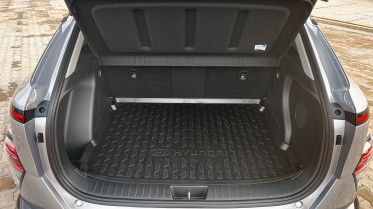
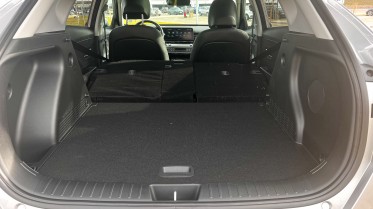
The trunk is a big improvement in the 2024 Kona Electric.
A neat feature of the rear seats is that they can latch on two different positions, so that you can open up some space to fit a larger item in the back, without folding the seats completely.
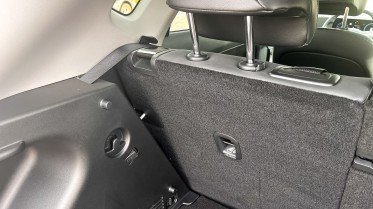
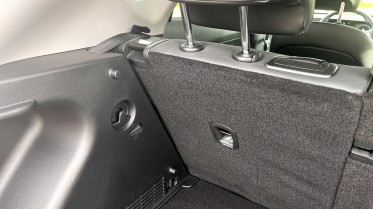
The seats have two latch positions for optimized practicality.
You also get a deep storage underneath the main floor, as well as a “floating” floor if you want to carry taller items and don’t need a fully flat deck. There are also extra pockets and hooks, which make the Kona impressively practical for its size.
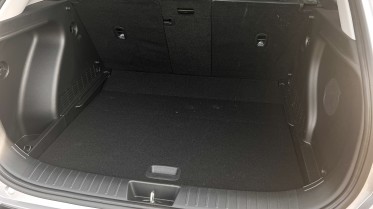
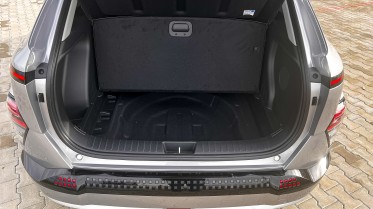
You can adjust the trunk however you want.
The Kona Electric also gets a frunk (front trunk), which is not the biggest, but enough to carry some small items with its 0.95 ft³ capacity.
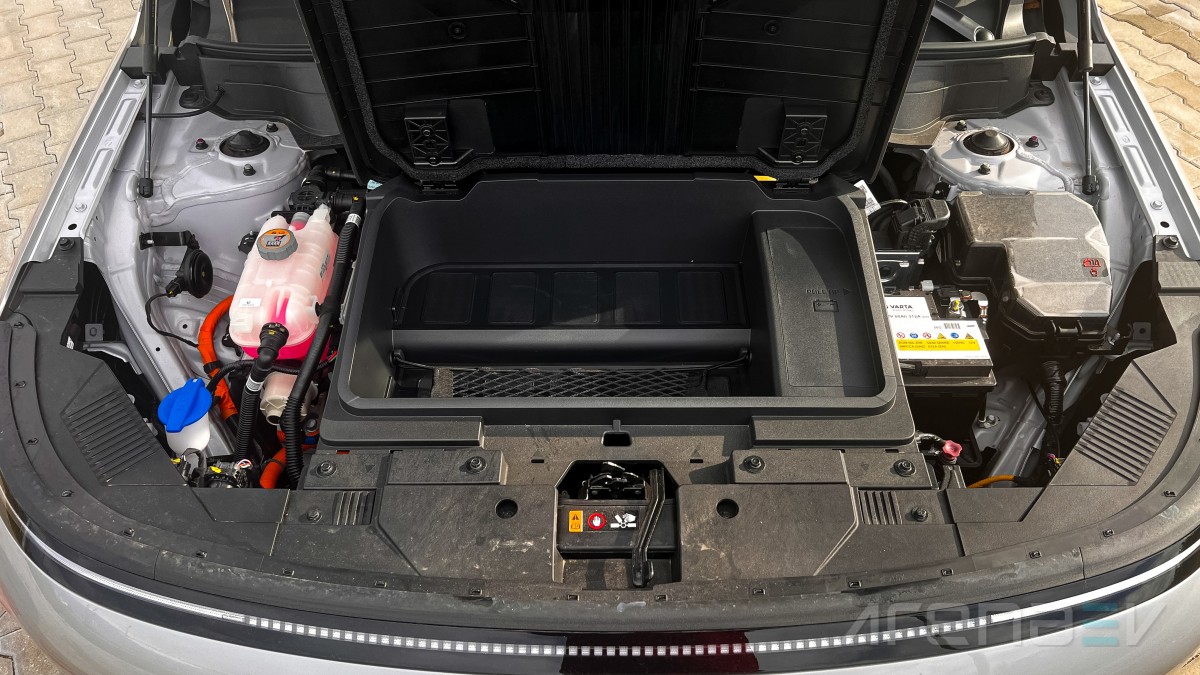
Driving experience
The Hyundai Kona offers a comfortable driving experience with no sporting claims, which is exactly what made the outgoing model so successful. For hard cornering and great power Hyundai offer the Hyundai Kona N, but for regular daily usage you don’t need any of the inconveniences that come with its setup and therefore the two models differ quite significantly.
The suspension of the Kona Electric is set with comfort in mind and the dampers absorb most of the road bumps well. That however leads to significant understeer and major lean in corners.
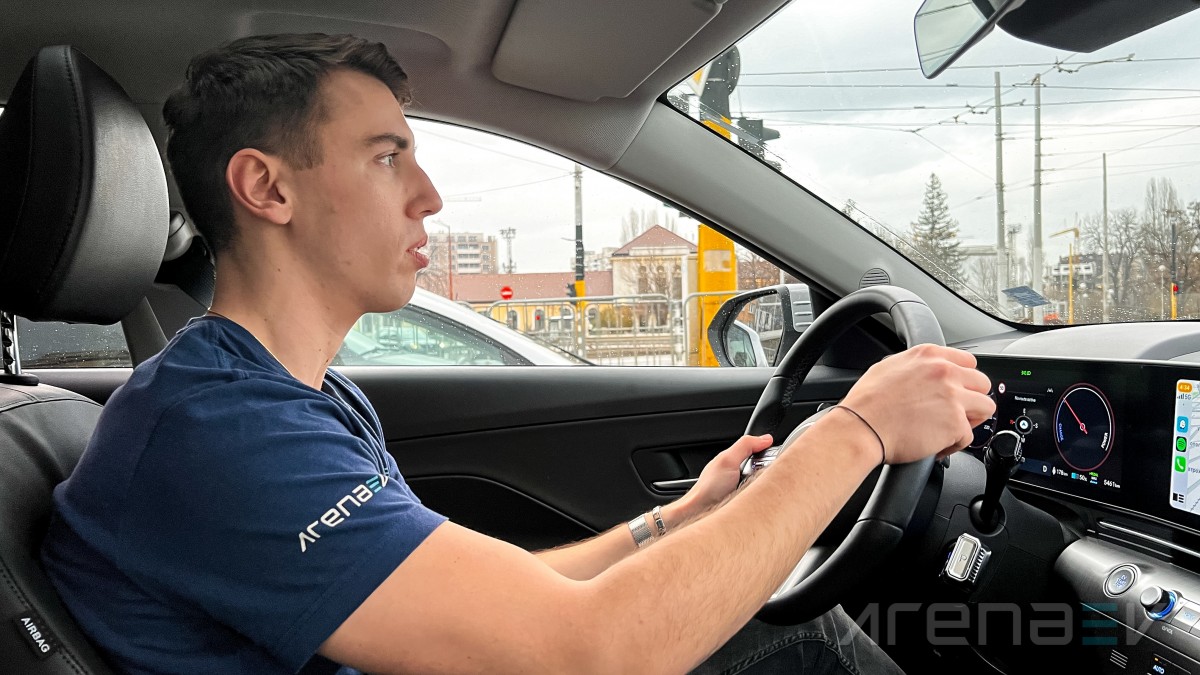
The previous generation Kona suffered from significant wheelspin at low speeds as it delivered too much torque to the wheels - so much so that it has become its infamous trait. The new Kona eliminates this problem and delivers much smoother accelerations, albeit being a little slower.
The steering is light and can be operated with a single finger, but this also sadly means you get little to no road feedback. This is a fantastic feat for daily driving, but when you’re out of the city and want to push the car a little it may prove annoying.
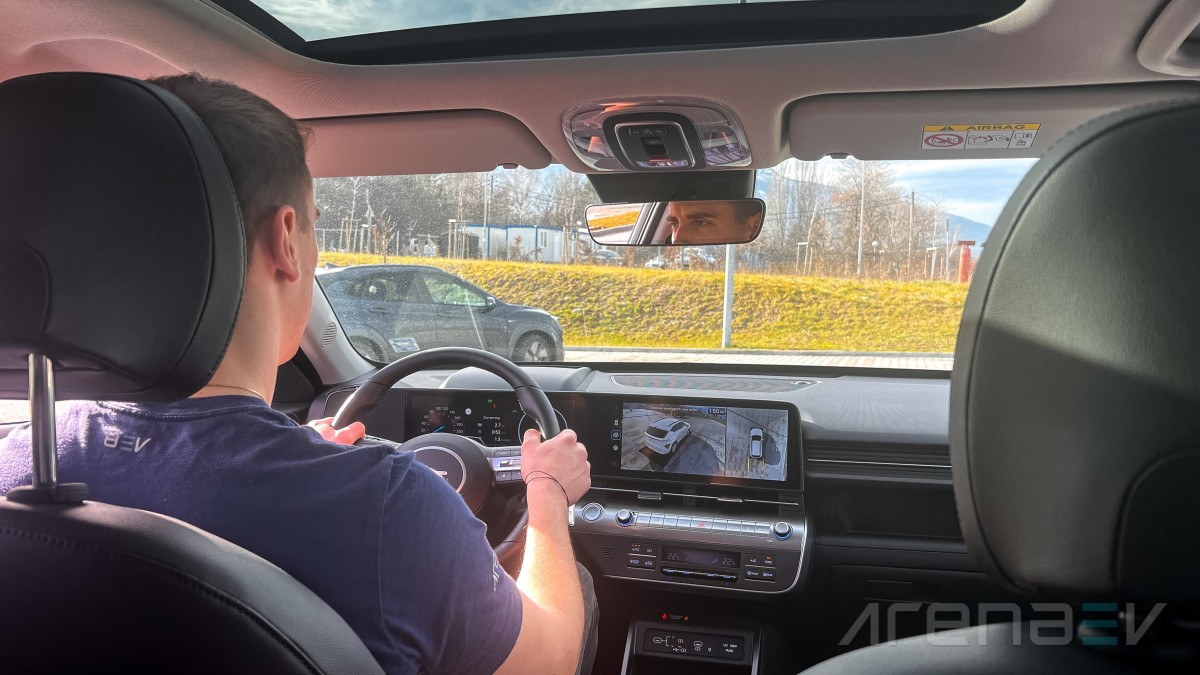
The drive mode selector we mentioned previously changes the way the vehicle responds, but effects are minor. Since there are no adaptive dampers the ride remains the same, the only thing that changes is the pedal response and ever-so-slightly the steering feedback. Snow is the only noticeably different mode, as it cuts down power significantly.

A major drawback of the Hyundai Kona Electric and sadly increasingly more vehicles are the multiple beeping assistants that go off all the time. They can be turned off, however this has to be done at the beginning of every drive. The most annoying ones are definitely the attention assist, the lane keeping assist and the speed limit assist.
The attention assist works thanks to a sensor, which tracks your eyes and monitors if you’re looking at the road. However, the second you turn your head to even look at the mirrors or the screen, it starts beeping at you to pay attention to the road ahead.
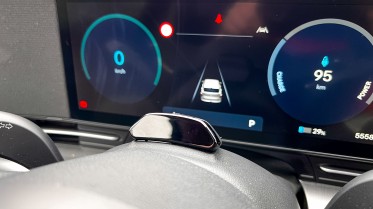
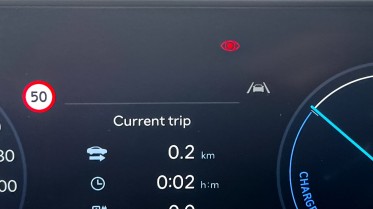
The sensors beep for your constant attention of the road.
Tech features
The Hyundai Kona Electric doesn’t break any new ground when it comes to on-board tech, yet it has a wide variety of modern goodies that will make your life easier.
The center touchscreen has good response times and offers a lot of functions. The menus are well laid oud and easy to read so you can find your way around pretty quickly.
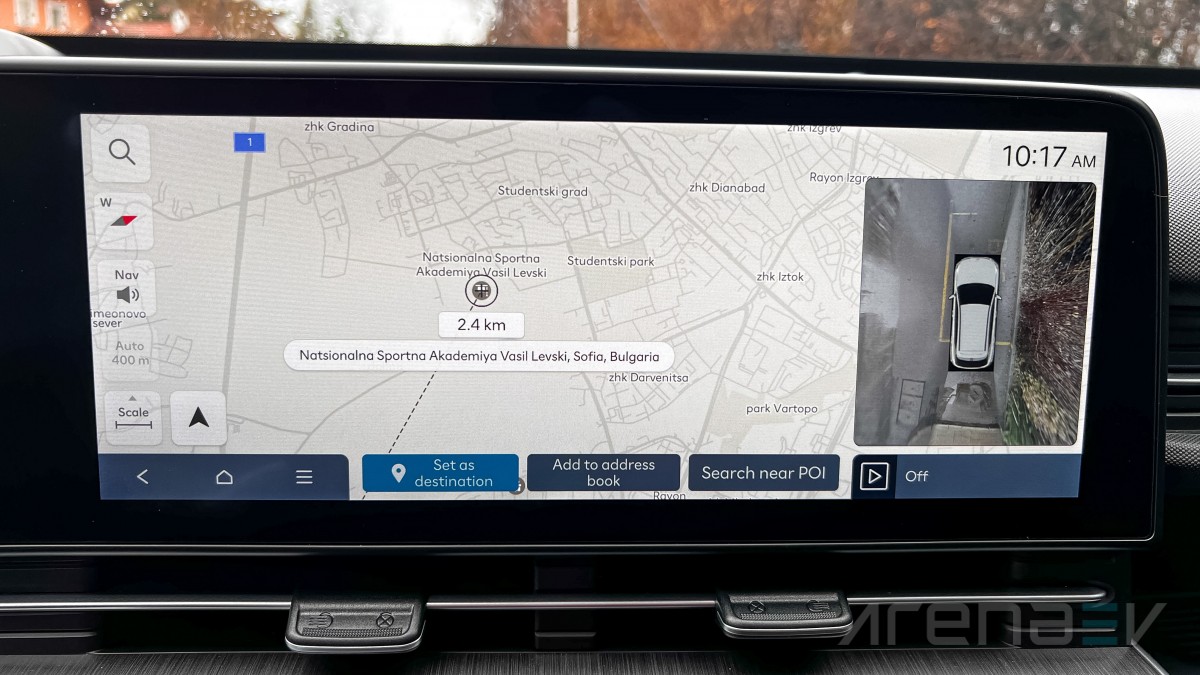
Through the infotainment system you get control of all battery-related functions. The Kona has V2L charging (vehicle to load), which means you can plug-in accessory items and charge them directly from your vehicle’s charge port. You can also control your heat pump and even how much the Kona recuperates (although you also have paddles behind the steering wheel for that).
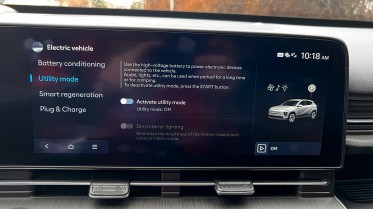
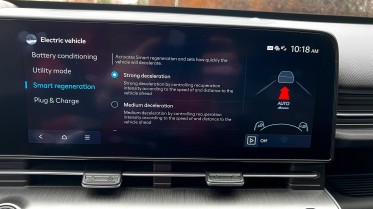
The battery of the Kona can be used as an electric outlet.
Hyundai has gotten a lot of negative feedback for the lack of wireless Apple CarPlay and Android Auto. This is finally coming to an end via an OTA update, which all customers should get in the future. The petrol versions already got the update, and the Kona Electric will soon, too.
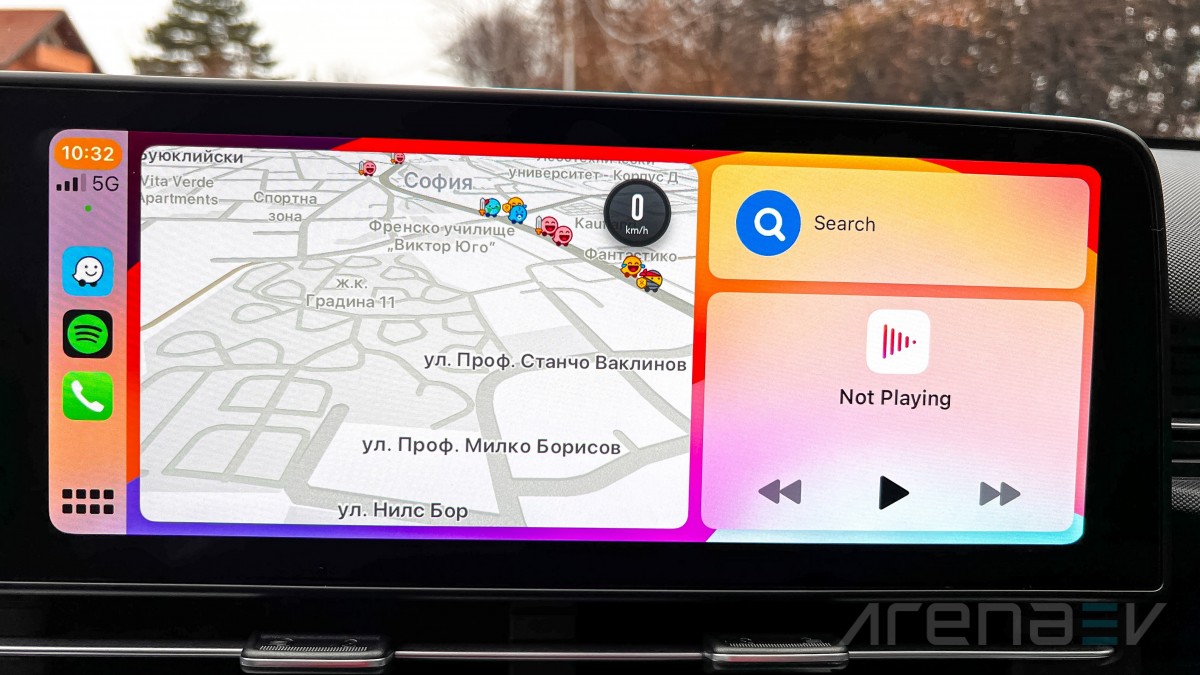
A bizarre feature the Kona has is that it can show you results of recent sports games, show you league standings and other sports stats. You can even set your favorite teams so that you never miss out on their results.
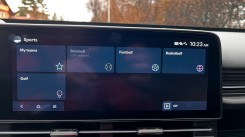
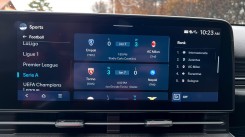
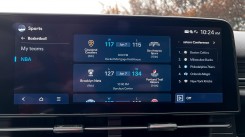
You like sports? The Kona has all the recent results ready for you!
You also get a live weather forecast, which may prove handy combined with the navigation if you’re planning on doing a longer trip and are not sure what the weather would be like at your final destination. However, we don’t really recommend using the map as it looks very outdated and in our case didn’t have even remotely recent coverage, which is a shame.
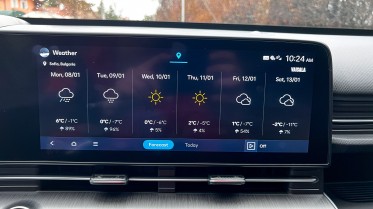

You can check the weather before heading for your destination
The camera system of the Kona is superb and works wonderfully. The quality is crisp even at night, the 360° view is accurate and helpful and you can select precisely which angle you want to see. The camera can even be minimized if you want to use the multimedia while parking.
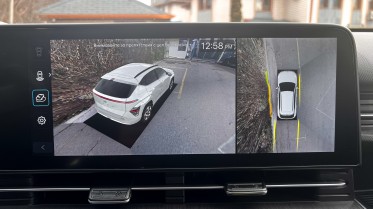
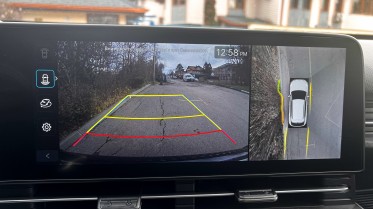
The cameras work perfectly in the 2024 Kona.
One great integration of the camera system are the blind spot cameras, which activate once you turn on the blinkers. This effectively eliminates the need of peeking over the shoulder while merging and is a helpful non-invasive feature we really enjoy and hope to see in more vehicles.
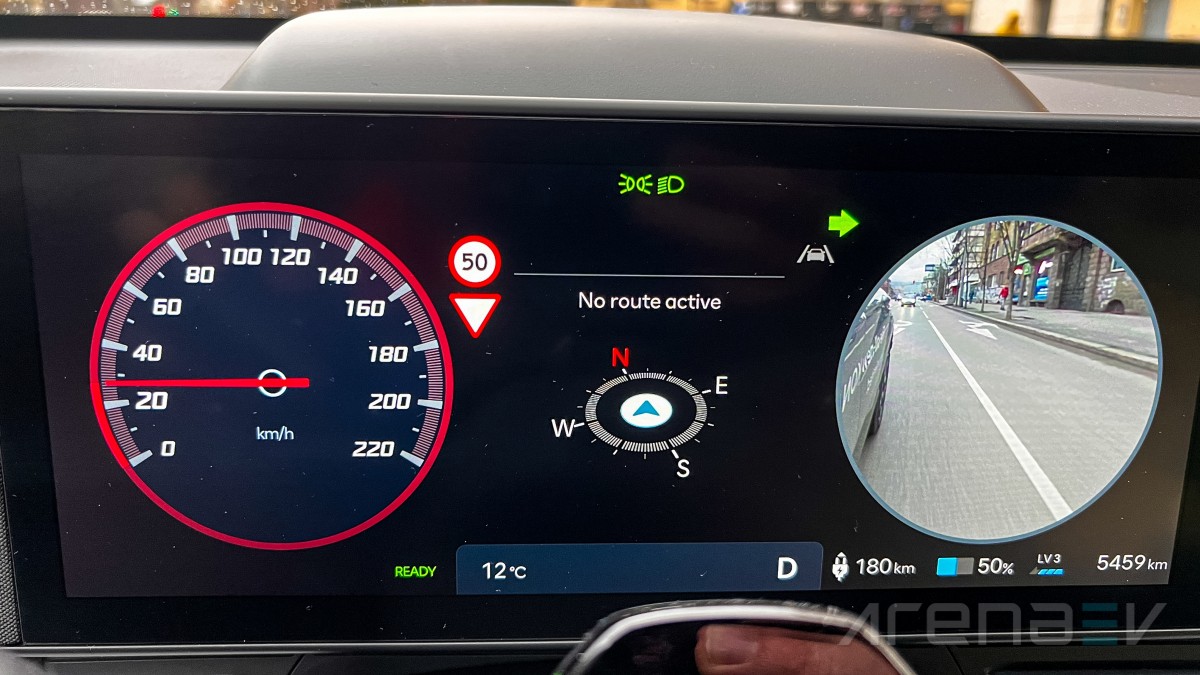
Ride comfort
As we already mentioned, the ride of the Hyundai Kona is tuned for comfort. Smaller uneven surfaces are hardly ever felt inside, but bigger bumps or potholes are absorbed through multiple bounces after impact, which may not be everyone’s cup of tea. Even though it is soft, the suspension is not wobbly, which is a very good middle ground.
Cabin noise
Insulation is a majorly improved aspect in the new Kona and the noise levels are more than satisfactory. Thanks to its more aerodynamic shape and much better sound insulation the new Kona impresses with a calmer atmosphere inside, including significantly lowered tire and wind noises.
Sound level tests are carried out with a specialized sound level meter placed in the car's cupholders. The test is conducted with air conditioning and radio off and while maintaining a steady speed.
Acceleration and braking
As we already mentioned acceleration on the new model is actually slower compared to the old Kona. The difference is insignificant, but considering the 2024 Kona has more power we’d assume it would be quicker. However, it has much less torque at 188 lb-ft, which eliminates the initial wheelspin on takeoff, but general acceleration suffers. Acceleration from 0 to 62 mph takes just as much as the manufacturer claims - 7.9 seconds.
Braking on the other hand has improved and even though the new Kona weighs more, it stops noticeably quicker and smoother than the outgoing model. However, the result is generally not impressive with its 40 m (131.3 ft) for the stop from 62 mph to 0.
Acceleration and deceleration are measured with a RaceBox device inside the car. Testing is done with a single person inside the car, with air conditioning and traction control off.
Consumption
The 2024 Kona Electric has good consumption levels for the segment, yet its new 19-inch wheels in the top-trim level hinder its range noticeably. Compared to the outgoing model, the new Kona is less effective, but this is a tradeoff that has to be done in order to get a generally improved vehicle. For a precise comparison between the two Kona Electric generations visit our dedicated range test! The testing was conducted at 52°F ambient temperature.
We measure consumption by driving at constant speeds on an identical test route during the day. Testing is conducted with air conditioning, all safety systems and radio on. The data comes from the vehicle's board computer. Specific testing parameters such as ambient temperature are mentioned in the text on a case by case basis.
We now suggest you use the widget below to find out the 2024 Kona's range in every combination of speed and temperature you might need. We've used our real world tests and a complex model to provide an estimate that should be as close to the actual performance as possible.
Charging speed
The Hyundai Kona Electric 65.4 kWh can charge with a maximum power of 100 kW. While low in absolute terms at least this value was easily reached by us even though the ambient temperature when we reached the charger was well below 32°F. The heat pump the model has enabled it to quickly precondition the battery for optimal charging performance.
Competition
The Hyundai Kona Electric 65.4 kWh is placed in a segment of high competition, but it has one big advantage on its side - all of its direct competitors are due for a refresh and are slightly outdated, while the Kona is brand new and up to date.
Its first competitor comes from the same parent-company in the face of the Kia Niro EV. The small Kia crossover uses the previous generation powertrain that the outgoing Kona used, yet the interior is modern and incorporates the latest of what Kia has to offer in terms of infotainment. Space and general feeling is comparable to the Kona, but material and built quality comparison goes to Hyundai.
The second rival is the Peugeot e-2008, which comes with a smaller battery and less power, but is also slightly cheaper. The french offers a much fancier and premium interior, as well as better handling. On the other hand, storage on the Kona is much better and the small Korean offers more modern features and systems.
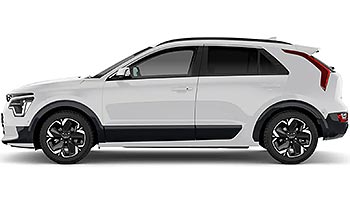
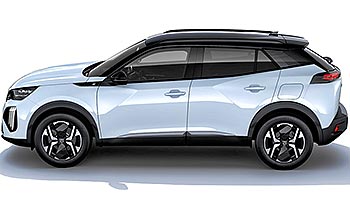
Kia Niro EV 2022 - • Peugeot e-2008 SUV 2023 -
Verdict
The Hyundai Kona Electric 65.4 kWh is an improved vehicle that comes to capitalize the success of its predecessor by refining its flaws and providing a better experience in most metrics. Surely, the Kona Electric is no game-changer in the automotive industry, but is a vehicle that masterfully integrates available features and offers them in a well-balanced package.

The 2024 Kona offers a multitude of conveniences for the driver and passenger so that your time inside can be as comfortable as possible. From the driving experience, through the steering feel to the seats and options, convenience is the main highlight of the Kona and the guys at Hyundai have done a great job of improving on what was offered so far.
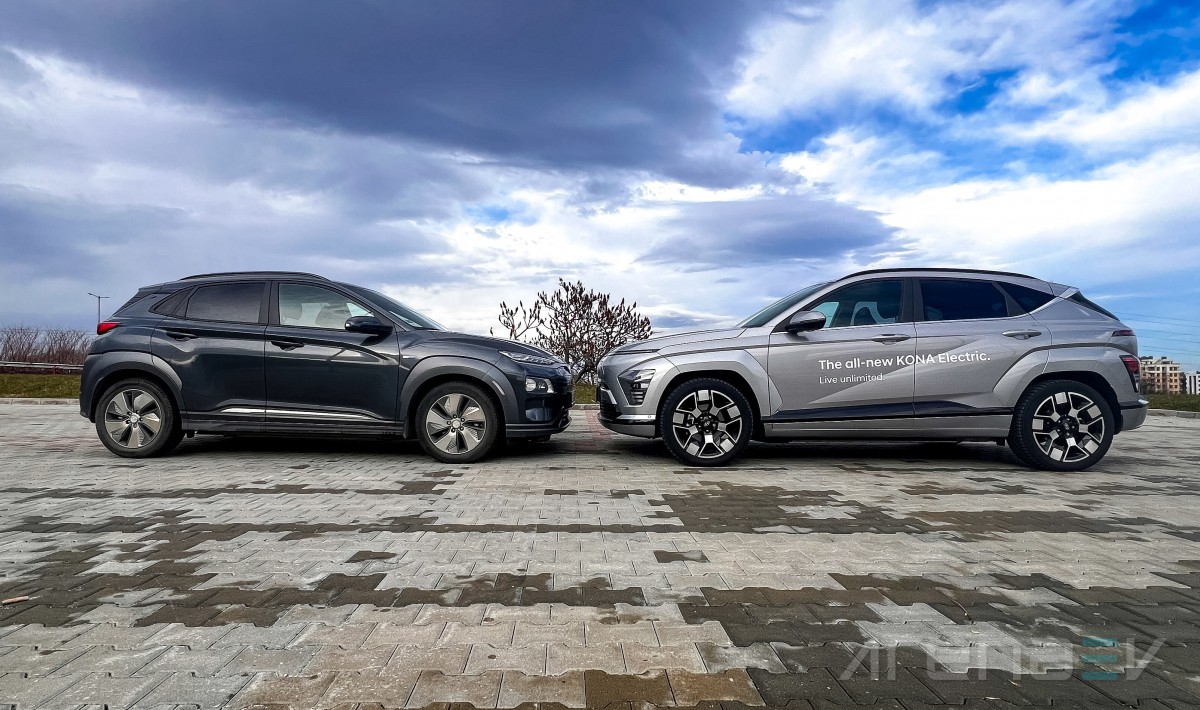
The Hyundai Kona Electric 65.4 kWh is a smart choice if you want a reasonably priced jack-of-all trades. It can carry your family with all luggage, as well as slightly go off the paved road, or just be your daily driver. There will be cars better than it at just about every task, but none that can really match it across the board.
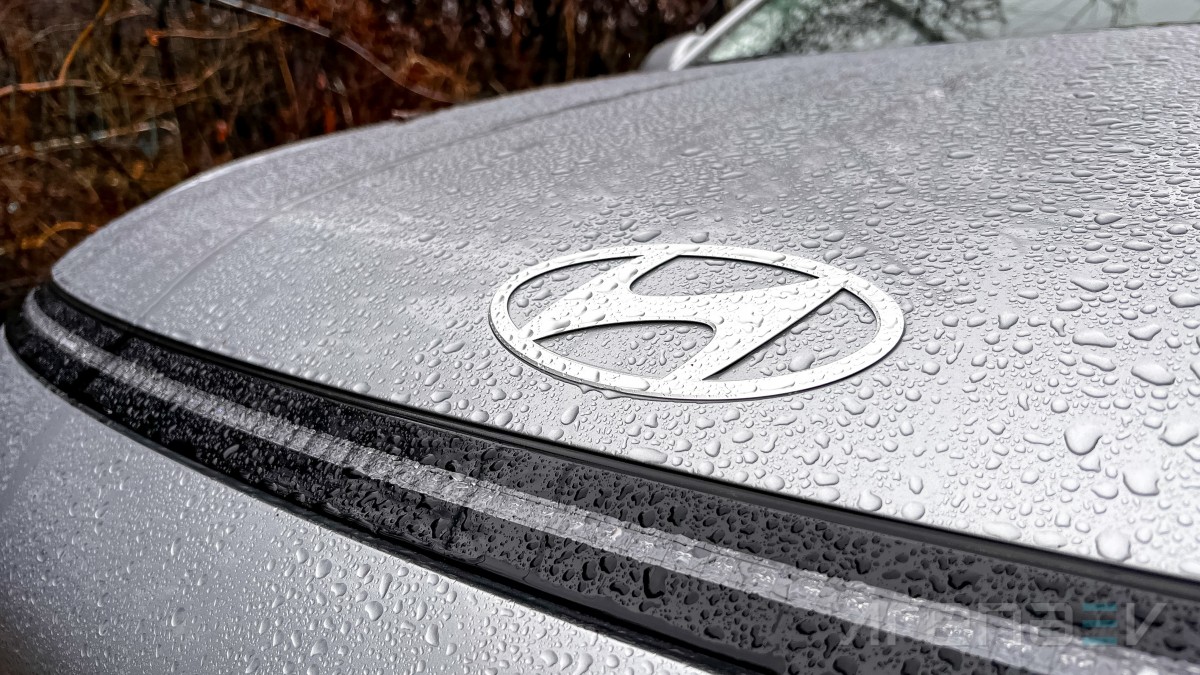
Pros
- Spacious interior.
- Great build quality.
- No wheelspin at acceleration.
- Comfortable ride.
- V2L (vehicle to load).
- Well insulated interior.
Cons
- Highly invasive driver aids.
- Vague steering.
- Uninspiring handling.
- Slower than the outgoing model.
Related
Reader comments
- MishkaZ
I took this car for a test drive. The consultant showed me that you just press and hold the scroll wheel on the steering wheel for a few seconds, and the annoying alerts switch off. https://www.hyundai.com/eu/en/driving-hyundai/owning-a-hyundai/blu...
- 17 Nov 2025
- 7Z%
- Deebee
Probably the most comprehensive road test I've read.As you say the annoying speed and driver awareness beeps and bongs can be turned off. Fortunately while stationary or on the move, with 6 prods of the touch screen . My E Kona is the base A...
- 28 Jan 2024
- n1X
- Anonymous
I test drove it a week ago. It feels like a bigger car, not like the old Kona.
- 25 Jan 2024
- A5x
